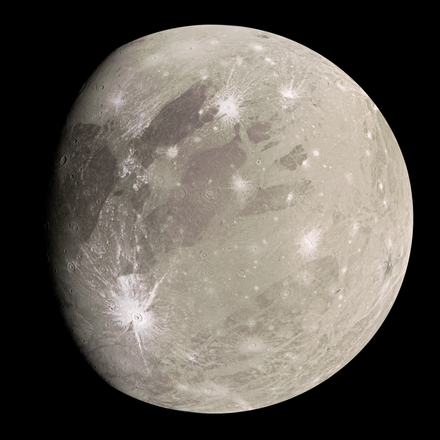
Jupiter has many moons, but the largest of them are the Galilean moon, Ganymede, Callisto, Europa, and Io. This post will explore the defining features of these Jovian moons.
The largest of Jupiter’s moons is Ganymede, the largest moon in the Solar System. In fact, Ganymede is larger than Mercury. This moon has a liquid core that produces the only known magnetic field in the moons of the Solar System. It is thought that there is a liquid water ocean beneath the surface of Ganymede, something that is thought to occur on other moons as well. The surface of Ganymede is heavily cratered and therefore very old. The moons Ganymede, Europa, and Io are in 1:2:4 resonance, which influences the level of tidal heating on each world.

Slightly larger than Earth’s moon, Io is the innermost of Jupiter’s moons and is extremely geologically active. There are over 400 active volcanoes on Io, a feat that is caused by friction due to tidal heating between Jupiter and the other large moons. The surface of Io is largely coated in Sulfur, which gives it a distinct yellowish color. Volcanism is a key feature of Io that also impact Jupiter as well. Emissions from Io’s atmosphere have inflated Jupiter’s magnetic field, making it much stronger than it would be without Io.

Europa is slightly smaller than Earth’s moon and has a smooth surface largely made out of water ice. The lack of cratering suggests geological activity on Europa such as plate tectonic-like activity that recycles water ice from the subsurface to the surface and back again. Another interesting feature of Europa is its internal ocean, which is likely heated by vents and sustained by tidal heating. The discovery of such conditions has opened the door to questions about the possibility of finding life on Europa.

Finally, there is Callisto, the second largest of Jupiter’s moons. The surface of Callisto is nearly all covered in craters and is therefore extremely old, aided by the fact that it does not experience much tidal heating. This moon is also thought to have an ocean deep below the surface.
Leave a comment